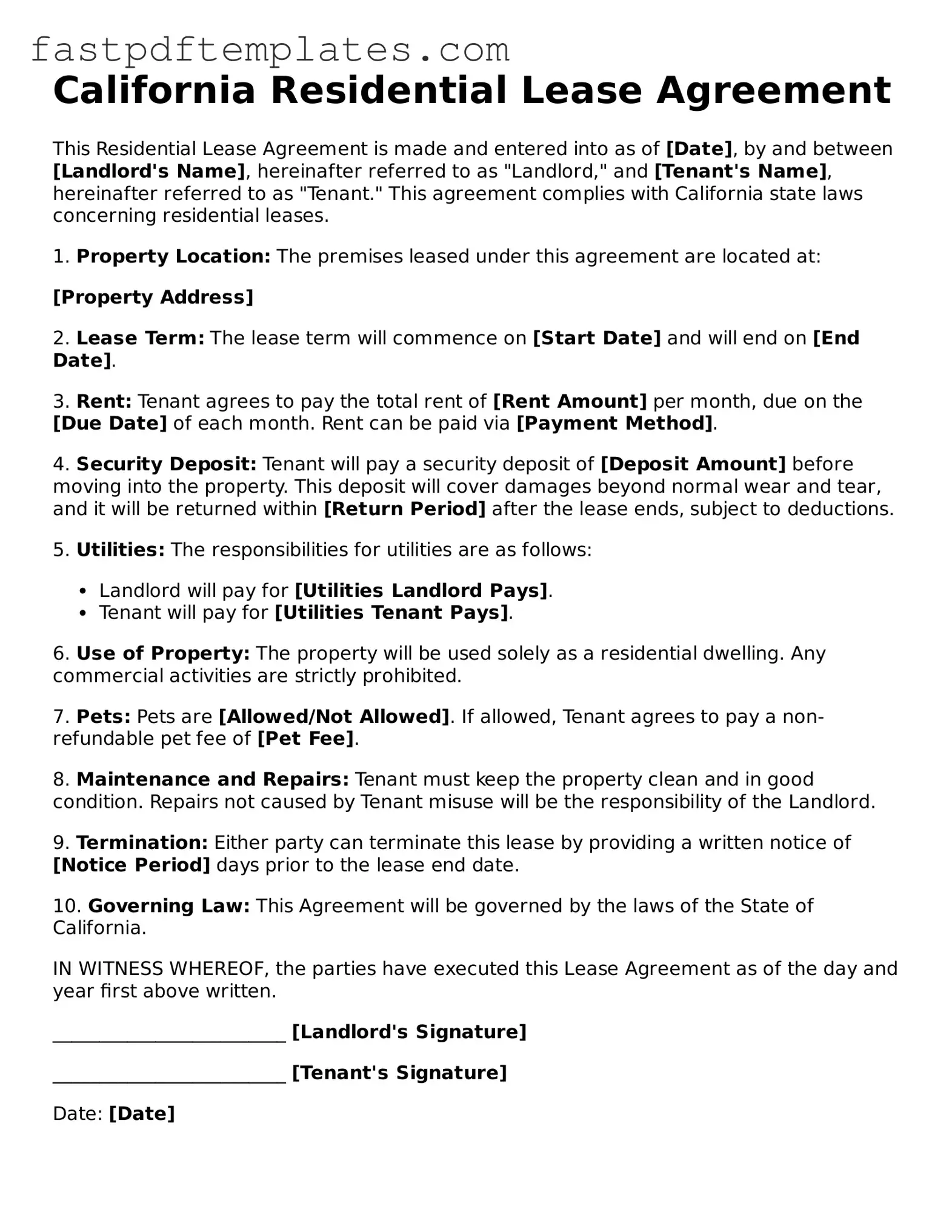California Residential Lease Agreement
This Residential Lease Agreement is made and entered into as of [Date], by and between [Landlord's Name], hereinafter referred to as "Landlord," and [Tenant's Name], hereinafter referred to as "Tenant." This agreement complies with California state laws concerning residential leases.
1. Property Location: The premises leased under this agreement are located at:
[Property Address]
2. Lease Term: The lease term will commence on [Start Date] and will end on [End Date].
3. Rent: Tenant agrees to pay the total rent of [Rent Amount] per month, due on the [Due Date] of each month. Rent can be paid via [Payment Method].
4. Security Deposit: Tenant will pay a security deposit of [Deposit Amount] before moving into the property. This deposit will cover damages beyond normal wear and tear, and it will be returned within [Return Period] after the lease ends, subject to deductions.
5. Utilities: The responsibilities for utilities are as follows:
- Landlord will pay for [Utilities Landlord Pays].
- Tenant will pay for [Utilities Tenant Pays].
6. Use of Property: The property will be used solely as a residential dwelling. Any commercial activities are strictly prohibited.
7. Pets: Pets are [Allowed/Not Allowed]. If allowed, Tenant agrees to pay a non-refundable pet fee of [Pet Fee].
8. Maintenance and Repairs: Tenant must keep the property clean and in good condition. Repairs not caused by Tenant misuse will be the responsibility of the Landlord.
9. Termination: Either party can terminate this lease by providing a written notice of [Notice Period] days prior to the lease end date.
10. Governing Law: This Agreement will be governed by the laws of the State of California.
IN WITNESS WHEREOF, the parties have executed this Lease Agreement as of the day and year first above written.
_________________________ [Landlord's Signature]
_________________________ [Tenant's Signature]
Date: [Date]
